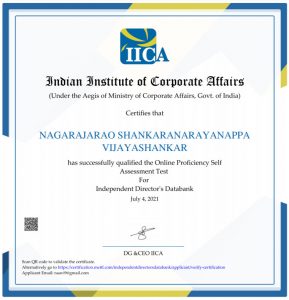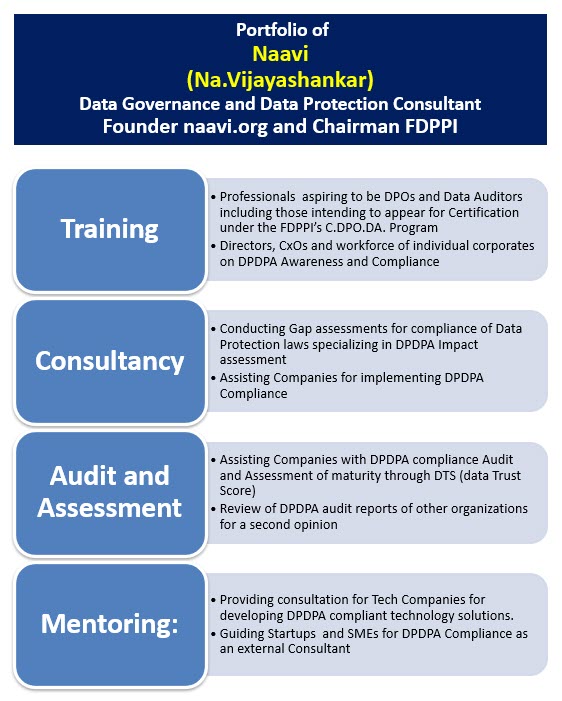India recognized laws applicable for the use of Electronic Documents with the passage of Information Technology Act 2000 (ITA 2000) on 17th October 2000. The law recognized contraventions of different kinds and prescribed civil penalties in certain cases as well as criminal penalties in other. Additionally, law also prescribed procedures for grievance redressal in detail for claiming of damages through an institution called “Adjudication” with an appeal process through Cyber Appellate Tribunal. (CyAT, which is now called Appellate Tribunal or AT and merged with TDSAT).
Over the past 14 years (Adjudicators were first appointed in 2003) we have seen how these Adjudicating offices have been functioning. Most Adjudicating officers are not interested in shouldering this responsibility and a few who were doing a good job have been transferred out for various reasons. There are a few who have not credited themselves with the decisions they have made. At the end of it, we can say that the system of Adjudication has not been as much of a success as it was meant to be.
The CyAT also functioned for nearly 2 decades without a single valid judgement coming out. This itself was the justification for the merger of CyAT to TDSAT.
In view of the non functioning of the Adjudicators and the CyAT, many disputes landed up with the courts burdening the system which is already reeling under a huge mountain of pending cases.
The Criminal cases have landed up with the Police and most of them are pending investigation since Police also donot have time and necessary expertise at all Police Stations to handle the complex Cyber Crime cases.
In this context there is a need for the Community and the Government to consider adopting the “Alternate Dispute Resolution” (ADR) process for Cyber Disputes in a big way.
We can note that ADR is already being used in some domains of Cyber Disputes. For example most of the E Commerce Companies have been using Mediation and Arbitration to resolve their disputes with the customers recognizing the disputes as a “Consumer Protection Issue”.
But a more formal system of ADR needs to be established to deal with all Cyber Disputes so that the burden on the legacy systems such as the Adjudication and the Police are reduced without adversely affecting the law of the land applicable in such cases.
Cyber Disputes Mediation and Arbitration Center (CDMAC) is in the process of developing this ADR for Cyber Disputes within the provisions of ITA 2000/8.
What is being proposed is invocation of an ADR process as a support to the Adjudication system and also the Criminal justice system within the boundaries of established law under Section 63 and Section 77A of ITA 2000/8
Section 63 of ITA 2000/8, states as under:
Sec 63: Compounding of Contravention
(1) Any contravention under this Act may, either before or after the institution of adjudication proceedings, be compounded by the Controller or such other officer as may be specially authorized by him in this behalf or by the adjudicating officer, as the case may be, subject to such conditions as the Controller or such other officer or the adjudicating officer may specify:
Provided that such sum shall not, in any case, exceed the maximum amount of the penalty which may be imposed under this Act for the contravention so compounded.
(2) Nothing in sub-section (1) shall apply to a person who commits the same or similar contravention within a period of three years from the date on which the first contravention, committed by him, was compounded.
Explanation – For the purposes of this sub-section, any second or subsequent contravention committed after the expiry of a period of three years from the date on which the contravention was previously compounded shall be deemed to be a first contravention.
(3) Where any contravention has been compounded under sub-section (1), no proceeding or further proceeding, as the case may be, shall be taken against the person guilty of such contravention in respect of the contravention so compounded.
Under this section, the Adjudicator is empowered to permit compounding in respect of the issue before him where he is likely to pass an order for payment of compensation under Section 46 of the Act.
What is proposed now is for the Cyber Disputes Mediation and Arbitration Center (CDMAC) (if approached by the parties to the dispute) to take up the Mediation or a Non Binding Arbitration which is then submitted by the parties jointly to the Adjudicating Officer for ratification if required. If the parties come to an amicable settlement the process can be closed at CDMAC level itself. If however, one of the parties has refused the terms of Mediation but there is a “Non Binding Arbitration Award”, he may prefer to refuse to abide and then the matter has to be taken up by either party to the Adjudicator.
It would be open to the Adjudicator to completely ignore the prior proceedings under CDMAC and hear the issue afresh and take a decision. In the case of CDMAC having undertaken a mediation effort which has failed, by virtue of the confidentiality clause, the proceedings of CDMAC will not be brought into the Adjudication table. However if the CDMAC process has been a “Non Binding Arbitration” instead of Mediation, it may be open by virtue of the Arbitration Agreement that the evidences presented in the Arbitration before CDMAC and its Non Binding Conclusion can be placed before the Adjudicator for his decision in whatever manner he wants to use it.
If this process is used, many disputes may be settled at the mediation level itself and in other cases, the Adjudication process can be speeded up.
Similarly when it comes to criminal issues, section 77A states as follows:
Section 77A: Compounding of Offences
(1) A Court of competent jurisdiction may compound offences other than offences for which the punishment for life or imprisonment for a term exceeding three years has been provided under this Act.
Provided that the Court shall not compound such offence where the accused is by reason of his previous conviction, liable to either enhanced punishment or to a punishment of a different kind.
Provided further that the Court shall not compound any offence where such offence affects the socio-economic conditions of the country or has been committed against a child below the age of 18 years or a woman.
(2) The person accused of an offence under this act may file an application for compounding in the court in which offence is pending for trial and the provisions of section 265 B and 265 C of Code of Criminal Procedures, 1973 shall apply.
Here again the power to compound lies with the Court and any proceedings of Mediation prior to this will only assist the Court to receive a settlement agreement and quickly dispose off the same. Again, if there is no agreement under the banner of CDMAC, the Court will proceed to do what it would otherwise do.
Hence what is being proposed is a Private Sector initiative to reduce the burden of the Adjudicating Officers and the Criminal Courts and the system in no way curtails the existing judicial protection available to the parties.
Since the use of CDMAC services is purely voluntary, there is no reason not to give a fair trial to this system which in due course may develop into an effective ADR mechanism for Cyber Disputes.
CDMAC proposes to use ODR facilities and this would be a great advantage to the disputing parties to reach a settlement without the hassles of personal hearings in physical meetings. CDMAC proposes to use the services of Techno Legal experts who can interpret Forensic findings and Cyber Laws in a manner which the parties may find satisfying in comparison to the legacy systems.
CDMAC proposes to use the following types of ADR :
a) Assisted Negotiation
b) Mediation
c) Conciliation
d) Non Binding Arbitration
e) Binding Arbitration
The disputing parties may chose what suits them best and sign a “Consent” contract indicating their acceptance to the ADR method to be used.
If CDMAC can handle the disputes professionally, parties should be happy to treat their dispute resolved without further action and hence the cost of CDMAC may substitute the cost they would have otherwise incurred which could be lower. If however the intervention of CDMAC is not fruitful, then the cost incurred at CDMAC would be an additional expense.
CDMAC is developing proper rules as are normally adopted by Arbitration Councils under the Arbitration and Conciliation Act 2015 and will try to conduct its operations within the parameters of this Act. It will try to set up an organizational structure that will ensue that appropriate members are available for Mediation and/or Adjudication and the rules of conduct are fair and costs reasonable.
At this point of time, views from experts in the field are being sought as to how this system can be structured to be of use to the society and the project is considered as being under incubation. Any suggestions and comments in this regard can be sent to Naavi.
Naavi







